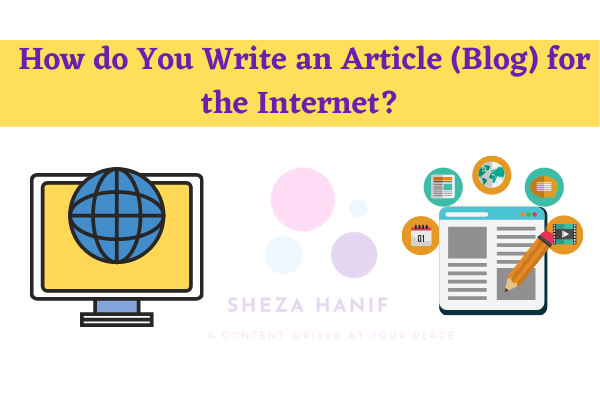How do you write an article for the internet? When writing a successful internet blog, we no longer adhere to the old-fashioned school rules. The hard demands of the volatile internet reader are central. Only 21% actually reads. In other words, 79% only scan or do not read your article at all. Unless you use the most powerful copywriting techniques and make smart use of headlines. Use the SEO MP method, and don’t forget the essential ATC strategy because then you have no chance. Ready to write better internet articles? Then use the following tips:
You do NOT write the best articles for the internet
How do you write an article so that your visitors actually read your article (or blog)? Then pay most attention to the layout and appearance of your article.
Surprisingly, the font and formatting of a text have such an impact on our brain. In fact, research shows that our judgment changes significantly when only the font changes.
The study consisted of two test groups. One group was instructed with an easy-to-read font, and the other group was given the same instruction, only with a hard-to-read font.
What turned out?
The first group stated that the text was easier to read, but they also expected to perform the exercise in more than 40% less of the time. And that only by changing the font.
Tips
The following tips can help you improve the layout:
- Provide sufficient blank lines
- Make sure there is enough space between your pages and the rest of your design.
- Provide separate cups
- Provide an easy-to-read font (font) size (minimum 12, but preferably 14 or 16)
- Don’t make your page too wide (max. 650 px)
- Use Webnemer to design your articles perfectly down to the pixel.
Use headlines and titles.
Use bullet points in your article and optimize for the lazy eye
Did you see what I did at the beginning of this article?
Take your time; you can scroll up.
I used bullet points to get the gist of this article succinctly and sweetly.
Do you have information that you can also display in bullet points? Then make good use of it.
Good bullet points ensure:
- Variety
- Attention (one bullet point differs from the other text)
- Easy to scan information
Give your articles the right make-up
Put extra emphasis on important elements in your text by playing with the formatting. For example, use bold or italics. It is better not to format text by underlining it. Underlining is generally used on the Internet to indicate links.
Get into the brains of your visitors and hit the right note. Do not subscribe
an article or blog because you only want extra visitors.
You want to achieve a certain goal.
More customers, more members, more donors, etc.
Whatever your goal is. Make sure you immerse yourself in your visitors (readers). Consider the following questions:
- Who buys my product, or who could buy my product?
- What is the purpose of my article?
- What situation should someone be in before buying my product/service?
- How does my product/service help the customer?
- What does someone do if he does not buy my product or service?
- When was the goal of my article achieved?
Are all answers clear? Do you have in mind what you want to achieve with each article?
Then incorporate this into your content strategy.
Pay attention to your language.
If you want to hit the right note with your visitors, make sure you take your language into account. Our ‘unconscious’ produces an accompanying ‘picture’ with everything we read or hear. That picture determines how something comes across to us.
That picture is anything but rational, even though we think we always think very logically. Forget it; our ‘unconscious’ is firmly in control!
All this has to do with framing.
Use a touch of SEO and automatically rank in Google
If you have to believe some SEO copywriters, search engine-friendly writing is nothing more than stuffing your articles with keywords. Fun…
But where has that common sense gone?
How did the idea arise that we should not write our articles for our visitors but Google?
In this article, I’ll reveal my way. The way you use psychology to strike the right chord with both your visitors and Google. I’ll show you techniques with which you can easily beat any SEO guru or competitor. Techniques that you can easily apply with the knowledge you already have.
Are you ready for it?
Then quickly read on about ‘how do you write for Google.’
How do you write an article if you have no inspiration?
Fortunately, the internet is bursting with inspiration, and writer’s block (the temporary lack of inspiration) doesn’t have to last long. Still, you may be unable to write a new article for your blog.
That is why I give you some tips in this article to get over your writing block.
Use an ATC strategy for each article.
What should a new article yield for you? How do you write the text? Do you want to be found in Google? Attract thousands of visitors to your website. Beautiful!
But what do you want to do with these visitors?
- Do they have to subscribe to your newsletter?
- Tell all their friends on Facebook about your company?
- Or buy your new b210 drill type A?
Without asking yourself what you want to achieve with your articles, your text is useless in advance. You might as well not write an article without an ATC strategy.
An ATC strategy (Aim to Convert) determines what you want to achieve with your article. What should every visitor do after reading the text? And how are you going to ensure that?
With call 2 actions.
Use call-to-action programs for your articles.
In the last step of your article, you think about the call to action. What do you want your visitors to do?
Do you want them to leave a comment, share your message on social media, or buy your product or service?
Need more inspiration? View the following call 2 actions for all your articles.
How do you write the conclusion? You can end your article with an attractive download, in which you immediately process an opt-in form for your newsletter (mailing list).
“Download the handbook“ Dominate Google and conquer that number 1 position in Google.”
You can invite people to leave a comment:
“Did you succeed in writing your article? Let us know in a comment.”
You can let people share on social media. This can be done via social media buttons, such as at the bottom of this article, and via share links that you include in the text itself.
“Tweet now: I just got X tips to write better articles.”
You can entice them to your product or service:
“Did you know that 78% of all articles will never get a good position in Google? Discover the best and most powerful SEO techniques in the Online SEO Course.”
You can, of course, also combine:
“Did you know that a bad tire causes 78% of punctures? Help your friends by tweeting this and immediately download your discount code for a new tire.”
For example, there are still many combinations and call to action to come up with. Use your creativity and measure the results!
So, are you ready to write better articles?
Do you think your network can benefit from these tips? A click on a social media button is easy?
Do you have a question, or are you curious about our opinion? Share it all in your comment.


Can you tell us more about this? I’d like to find out
some additional information.
Great blog here! Also your website loads
up very fast! What host are you using? Can I get your affiliate link to your host?
I wish my site loaded up as quickly as yours
lol
Awesome! Its really remarkable post, I have got
much clear idea concerning from this piece of writing.